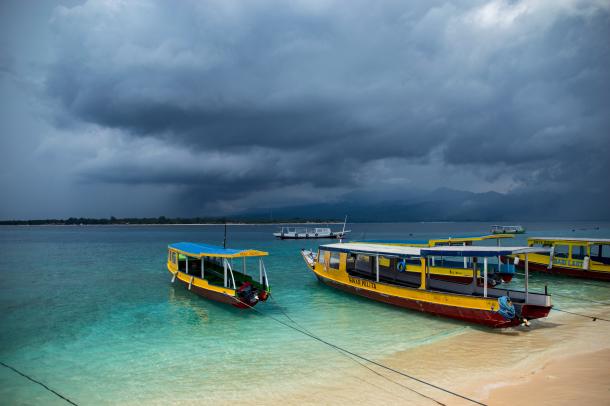Early Warnings for All officially becomes WMO’s top priority
Geneva – The groundbreaking international campaign to ensure that everyone on Earth is protected against hazardous weather by life-saving early warning systems by the end of 2027 has been officially recognized as the top overriding priority of the World Meteorological Organization.
“This resolution agrees that the fulfilment of the WMO contribution to the successful implementation of the Early Warnings For All Initiative shall be accorded the highest priority in the WMO Strategic Plan 2024–2027, ” said the World Meteorological Congress resolution.
The 193-Member Congress, which is the WMO’s top decision-making body, said it was mindful of the “ambitious time frame, the complexity of the technological, social and economic aspects, and the urgency implied by the increasing threats and risks from natural hazards.”
It said that key WMO activities should be coordinated and consolidated under the Early Warnings for All umbrella and WMO programmes, technical commissions and regional activities aligned to achieve the goal.
National Meteorological and Hydrological Services are the official and authoritative providers of early warnings for hydrometeorological hazards.
Climate Adaptation
“Multi-hazard early warning systems are an international success story and have saved countless lives. They are widely regarded as the low-hanging fruit of climate adaptation. They are efficient and cost-effective, providing an estimated tenfold return on investment,” said WMO Secretary-General Prof. Petteri Taalas.
“However, only half of countries have early warning systems in place with coverage especially low in Small Island Developing States (SIDS), Least Developed Countries (LDCs) and in Africa. The death toll is disproportionately high in these countries,” he said.
 Economic losses increase, death toll falls
Economic losses increase, death toll falls
Extreme weather, climate and water-related events caused 11 778 reported disasters between 1970 and 2021, with just over 2 million deaths and US$ 4.3 trillion in economic losses, according to new updated figures released for the quadrennial session of Congress.
Economic losses have soared. But improved early warnings and coordinated disaster management has slashed the human casualty toll over the past half a century.
Thus, in the decade 1970-1979 there were more than 556,175 reported deaths from weather, water and climate-related hazards, and in 1980-1989 there were 666,000 deaths. This fell to 184,000 in 2010-2019.
Extremely severe cyclonic storm Mocha exemplifies the success. It caused widespread devastation in Myanmar and Bangladesh, impacting the poorest of the poor, but the death toll was relatively limited. In the past, both Myanmar and Bangladesh suffered death tolls of tens and even hundreds of thousands of people. Thanks to early warnings and disaster management these catastrophic mortality rates are now thankfully history.
WMO’s Regional Specialized Meteorological Center New Delhi (India Meteorological Department) issued accurate forecasts of the track and intensity of Mocha, as did the Bangladesh and Myanmar meteorological departments. The WMO community worked closely with humanitarian partners who in turn coordinated with community groups and first responders on the ground.
Four pillar approach
UN Secretary-General António Guterres launched the initiative on World Meteorological Day 2022. He wants to ensure every person on Earth is protected by early warning systems by the end of 2027.
The initiative is spearheaded by WMO, the UN Office for Disaster Risk Reduction, International Telecommunications Union, International Federation of Red Cross and Red Crescent Societies, with support from more than twenty others UN agencies as well as a very wide range of stakeholders, from financial institutions to private sectors.
The Executive Action Plan is organized along the four pillars of a multi-hazard early warning system (MHEWS):
* Pillar 1 – Disaster risk knowledge
* Pillar 2 – Observations and forecasting
* Pillar 3 – Dissemination and communication
* Pillar 4 – Preparedness and response
WMO leads the implementation of Pillar 2, and supports Pillars 1, 3 and 4.
The months ahead will see stepped up coordinated action, initially in 30 particularly at-risk countries, including Small Island Developing States and Least Developed Countries. Additional countries are expected to be added as this vital work with partners gathers pace, scale and resourcing.

Resolution highlights
The World Meteorological Congress resolution noted that the Early Warnings for All initiative is fully in line with the mission of the National Meteorological and Hydrological Services (NMHSs) in providing meteorological, hydrological and related services to protect life and property.
It said it “would provide a new opportunity and momentum of achieving this mission through a global partnership and robust resource mobilization.”
The resolution stressed:
- The need for an inclusive, multisector approach to planning and implementation of EW4All
- National government ownership and leadership
- Coordination to avoid duplication
- Strategic partnerships, including with development and funding agencies
- Increased capacity development including mobilization of technical experts
- Engagement with the private sector and twinning arrangements
It said that existing initiatives in which WMO is one of the lead agencies such as the Climate Risk and Early Warning Systems (CREWS) and the Systematic Observations Financing Facility (SOFF), should play a key financing and implementation role in the EW4All Executive Action Plan and the Regional Action Plans that may be developed,
The resolution Invites funding agencies and development partners to contribute and align their practices with the UN objective.

